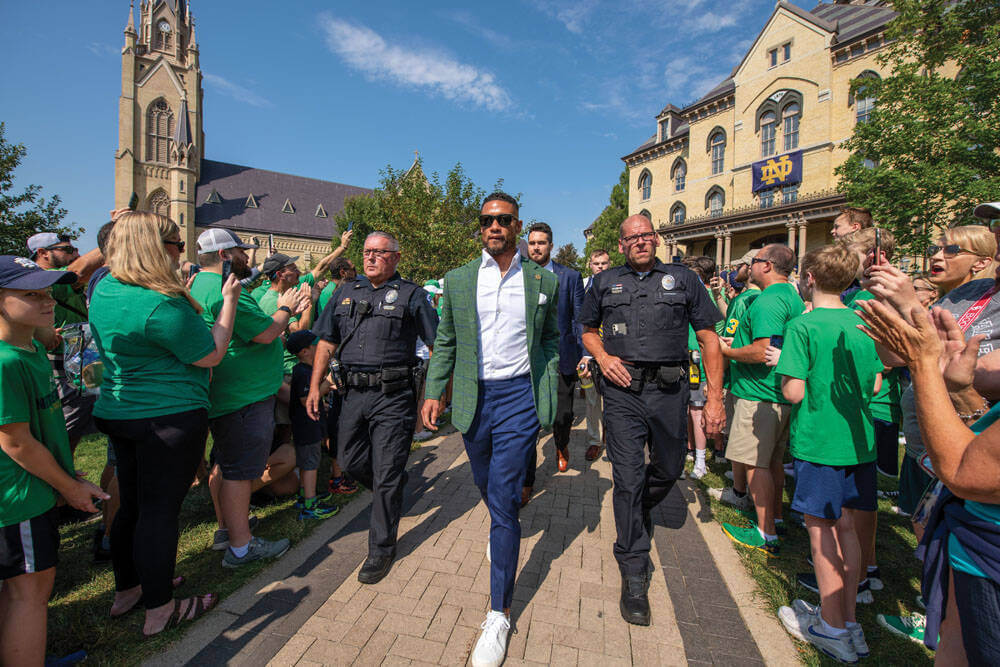
Head coach Marcus Freeman has reinstated the home football weekend tradition of the team walk from Mass at the Basilica of the Sacred Heart to Notre Dame Stadium. In recent years, team members walked from the Guglielmino Athletics Complex to Hesburgh Library and then to the stadium, being greeted by fans along the route. In the revived tradition, now called the Victory March, the team walks from the basilica to the Library Lawn, where Freeman gives a short speech before going to the stadium.
Another longstanding Notre Dame tradition — pep rallies on the eve of home football games — has gone the way of bachelor dons and Sunday afternoon tea dances. A “Rockne Rally” on South Quad marked this year’s home opener, but none were held the rest of the season. Students didn’t seem to notice.
Returns on Notre Dame’s endowment decreased 6.9 percent during the fiscal year that ended June 30, 2022. The University’s performance is not an outlier. The median result for university and foundation endowments was a 7.8 percent loss — the worst among U.S. colleges since 2009 — according to a preliminary estimate by the global investment firm Cambridge Associates that was reported in The Wall Street Journal in November. The drop came one fiscal year after Notre Dame’s endowment pool produced a 53 percent return, the second-highest one-year rate in its history. The endowment is the University’s largest revenue source, making up about 38 percent of its annual budget through more than 7,400 funds.

Electric scooters are more popular than ever among Notre Dame students, but new rules govern e-scooter use, beginning with a ban inside campus buildings. No longer do the devices clutter hallways, stairways or lobbies: Students must park them outdoors. The use and safety guidelines further require students to register their scooters with the Notre Dame Police Department and to keep to the right on sidewalks. They also restrict rides to one person per scooter, and forbid the use of cell phones, earbuds or headphones while the scooter is in motion.
Considered motor vehicles by the NDPD, e-scooters are ubiquitous on campus. Their dramatic rise in popularity correlates with an increase in motor vehicle thefts during the past two years, the University noted in its annual campus safety report. Of the 13 motor vehicle thefts reported on campus in 2020, 12 involved e-scooters and one a golf cart. In 2021, those numbers jumped to 28 e-scooters and five golf carts, out of 36 reported motor vehicle thefts in all.
In a victory for those who voiced their opinions, Notre Dame graduates will be able to keep their alumni Gmail accounts. After notifying users in September that the accounts would be eliminated, the Alumni Association heard from many that those accounts and the @alumni.nd.edu addresses were important to them. However, because Google has placed limits on storage space, the Alumni Association in November phased out access to Google Drive and Google Photos. For details, visit: my.nd.edu/page/alumni-google.
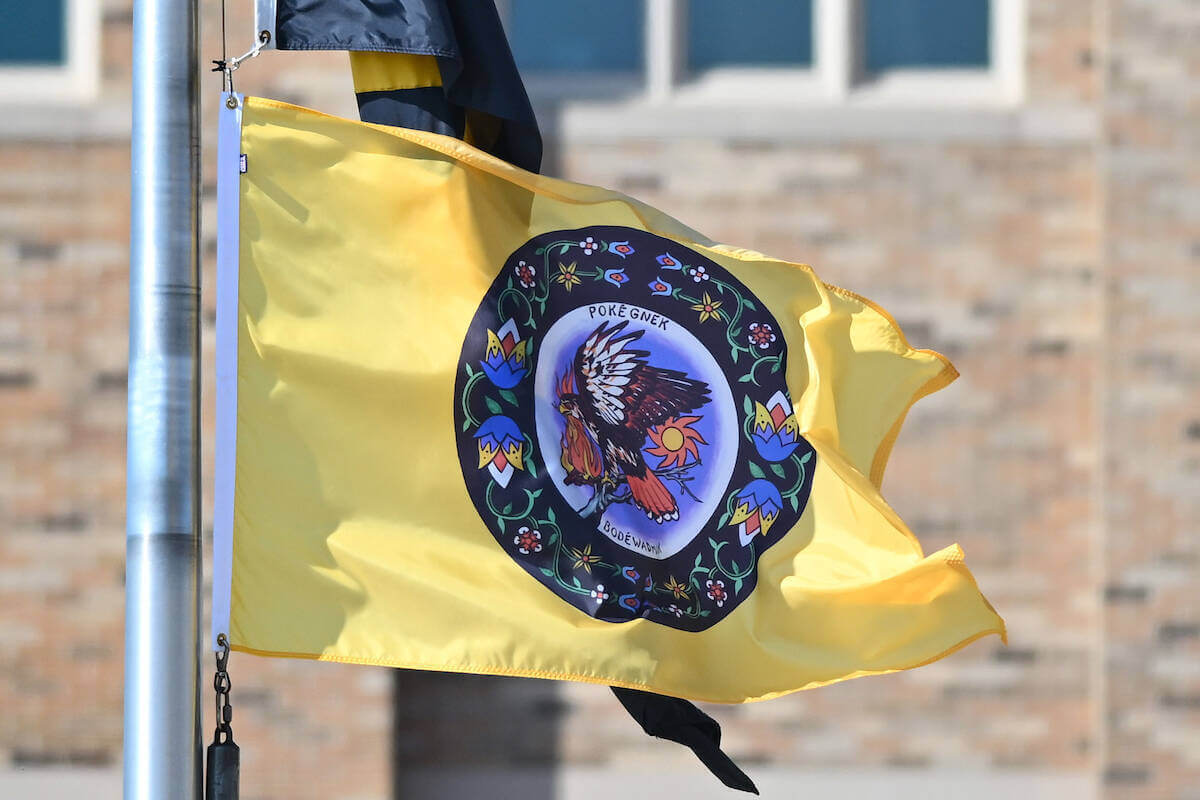
The yellow flag of the Pokégnek Bodéwadmik, the Pokagon Band of Potawatomi, flew for a week outside Notre Dame Stadium to mark Indigenous Peoples’ Day. The University stands on land that is part of the traditional homelands of the Potawatomi.
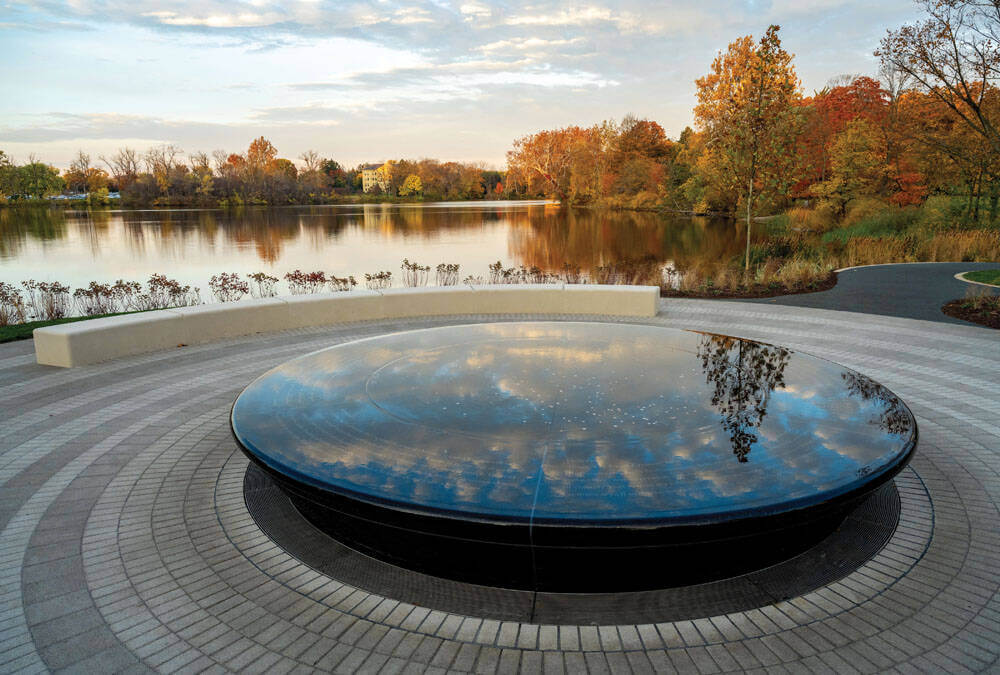
An infinity fountain started flowing in October at the new Our Lady of the Lake World Peace Plaza, a place of respite and reflection on the eastern shore of St. Mary’s Lake near the Grotto. The fountain is inscribed with a prayer for peace in six languages.
The Notre Dame Police Department’s sworn officers are now wearing body cameras integrated with the dashboard cameras already installed in campus police cars. The University has also rolled out an ND Safe app for students and employees that includes one-touch calls to NDPD, the local 911 center and nonemergency assistance plus a way to share the user’s location with friends or campus police.
Notre Dame was among 57 Catholic colleges and universities in August to file an amicus brief with the U.S. Supreme Court in support of affirmative action in college admissions as challenged under Students for Fair Admissions, Inc. v. President and Fellows of Harvard College and a related lawsuit. Achieving racial diversity in admissions, the brief argues, is “inextricably intertwined” with the institutions’ “religious foundations.” Oral arguments were heard in the fall and a ruling is expected this summer.
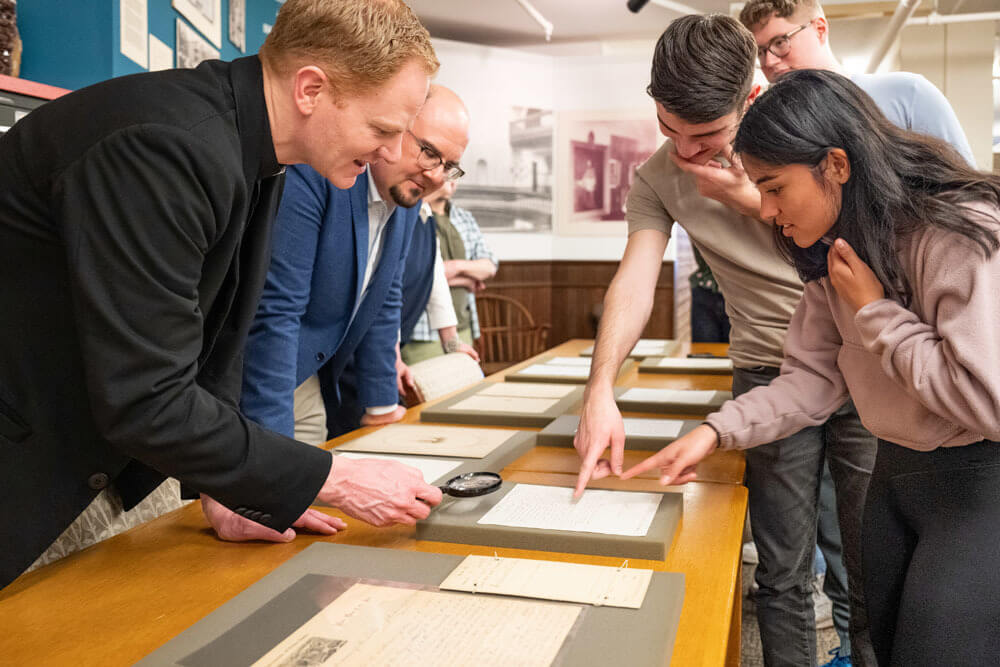
Notre Dame undergraduates are shedding new light on the life of University founder Rev. Edward Sorin, helping to interpret never-before translated letters to and from the French immigrant priest who arrived in northern Indiana in 1842. The effort is part of a class taught by Rev. Gregory Haake, CSC, ’99, ’06M.Div., whose Sorin Translation Project began in 2019 when a University archivist, while sorting materials received from the Congregation of Holy Cross, discovered boxes containing hundreds of untranslated letters belonging to Sorin and written in French. Haake designed a course that focuses on creating transcriptions and translations of the correspondence and is planning a digital exhibit to share them with the public.
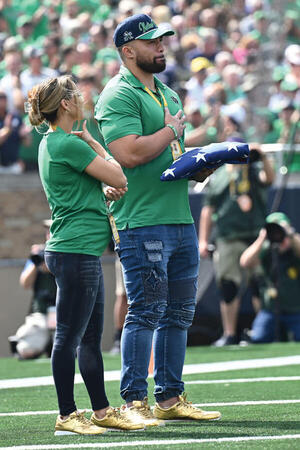
Former Fighting Irish linebacker Manti Te’o ’13 made an emotional return to Notre Dame and spoke to fans on the weekend of the California game. “There’s no place like home,” Te’o told a crowd on the Library Lawn. “But I want to make this real clear. It’s not about me, it’s not about one person. It’s about this whole family.”
Te’o’s first public appearance on campus since his playing days came nearly a decade after he was the victim of a catfishing scheme that involved a fictitious girlfriend. The complex hoax was explored in a Netflix documentary released last summer. Te’o said he was pleasantly surprised by public response to the film. During his visit, he attended a pregame Mass with the football team then walked with the players to Notre Dame Stadium, where he presented the colors and was honored on the field before the game, drawing huge applause from fans. He wiped away tears and placed his hand over his heart as he saluted the crowd.
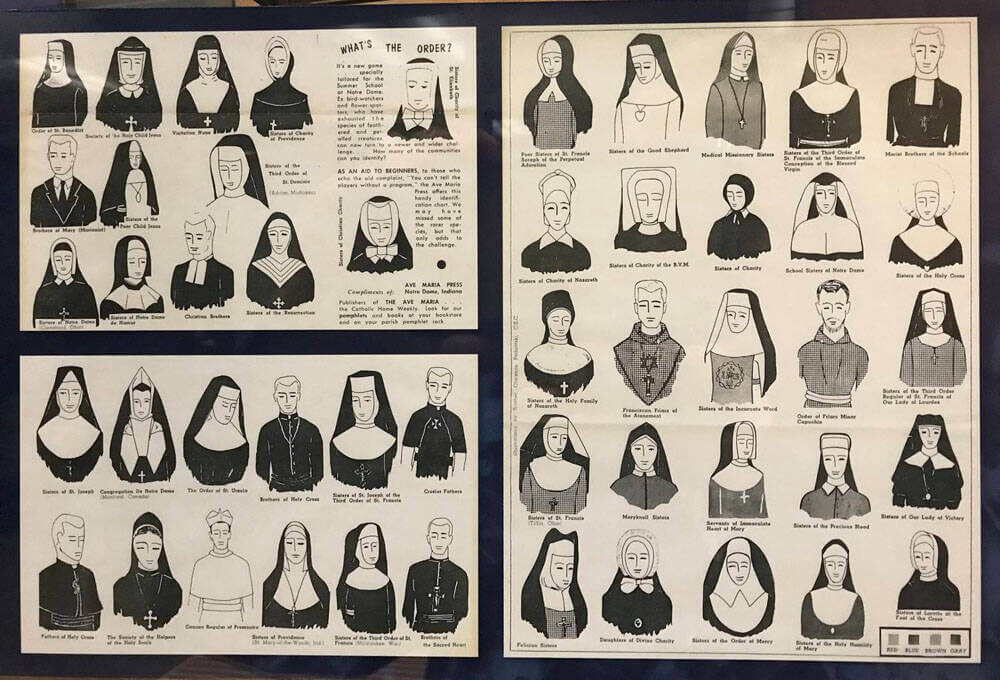
So many priests and religious attended summer school classes at Notre Dame in the 1950s and ’60s that keeping the orders and their habits straight posed a challenge. The solution was a brochure titled “What’s the Order?” which made a game out of identifying some 50 orders and their traditional clothing and likened the effort to birdwatching. The brochure was included in “Daughters of Our Lady: Finding a Place at Notre Dame,” an archival exhibit presented in the fall in Hesburgh Library as part of the University’s yearlong celebration of 50 years of undergraduate coeducation. (Sister Thoma Swanson, O.P., ’58M.A., documented the various habits in charming sketches in her art notebook 65 years ago.)
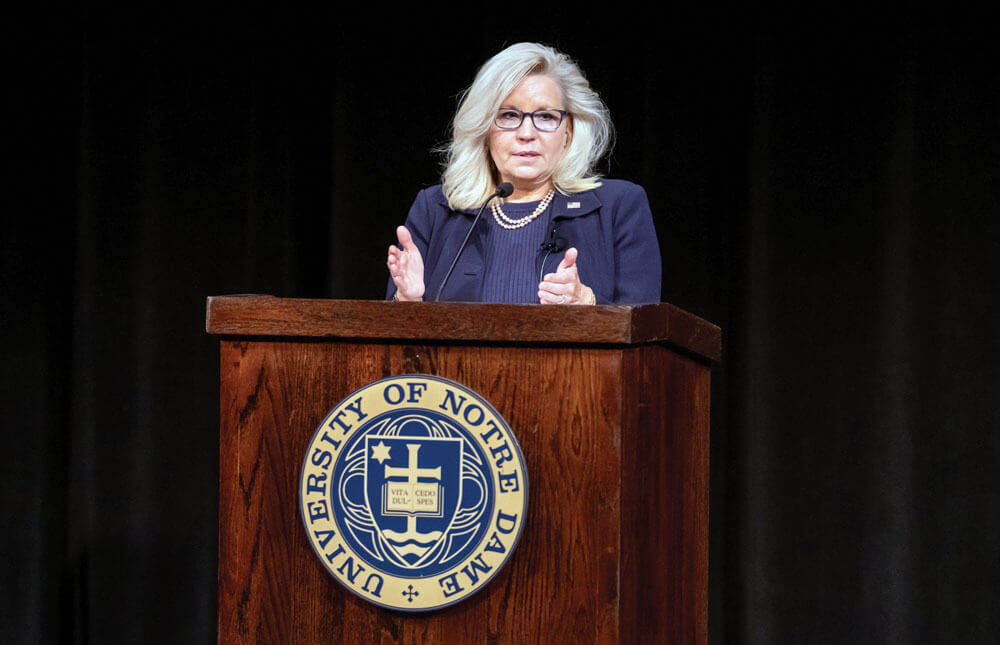
During her October 14 address at Washington Hall, then-Congresswoman Liz Cheney delivered a stark message about the future of the United States if Americans embrace violence and falsehood and block the peaceful transfer of power following fair elections. Describing the aftermath of the January 6, 2021, insurrection at the U.S. Capitol, the Wyoming Republican said former President Donald Trump poses a serious threat to American democracy. “The fundamental question for us is: Will we commit ourselves to our Constitution? And will we commit ourselves and honor the outcome of our elections, even when we lose? And maybe especially when we lose? That is the fundamental fabric of our democracy. And that is what is at risk today.” Cheney served as the top GOP member of the U.S. House select committee that investigated the attack on the Capitol. She broke with mainstream Republican support for Trump and became a vocal critic of the former president, then lost in her party’s Wyoming primary to a Trump-endorsed opponent. Her term expired in January.
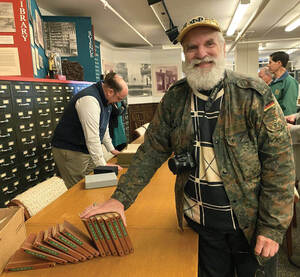
In October, Fritz Keppler ’69 donated a 4,000-plus-page diary to the University’s archives. The diary describes his 1966-67 student experience in Innsbruck, Austria, then home to the University’s pioneering German language study-abroad program, as one of 40 Notre Dame students to spend the year in that Alpine city. As soon as the group left for Europe aboard the SS United States, Keppler began keeping the journal. By the time he returned to Notre Dame, his written record had grown to 14 notebooks, two of which have been lost. Keppler’s year abroad included a six-week Easter trip to France, Spain, Gibraltar, Morocco, Great Britain, Belgium, the Netherlands and Germany. The diary concludes with his return to New Orleans from Rotterdam aboard a Dutch freighter. “I haven’t rewritten any of it,” Keppler told the University of Notre Dame Class of 1969 Blog, “and the writing is frequently overwrought and florid as a 19-year-old might write.”